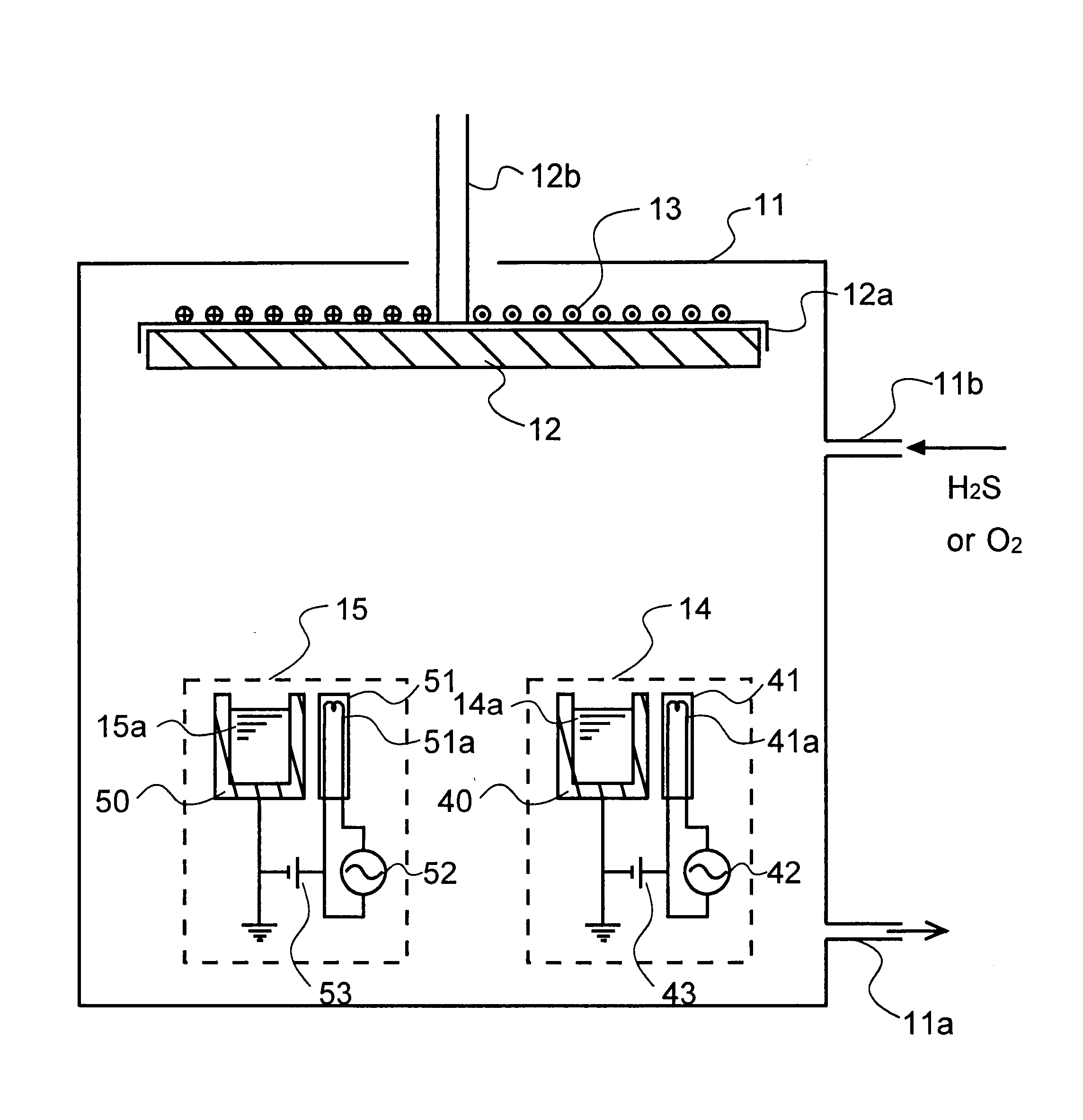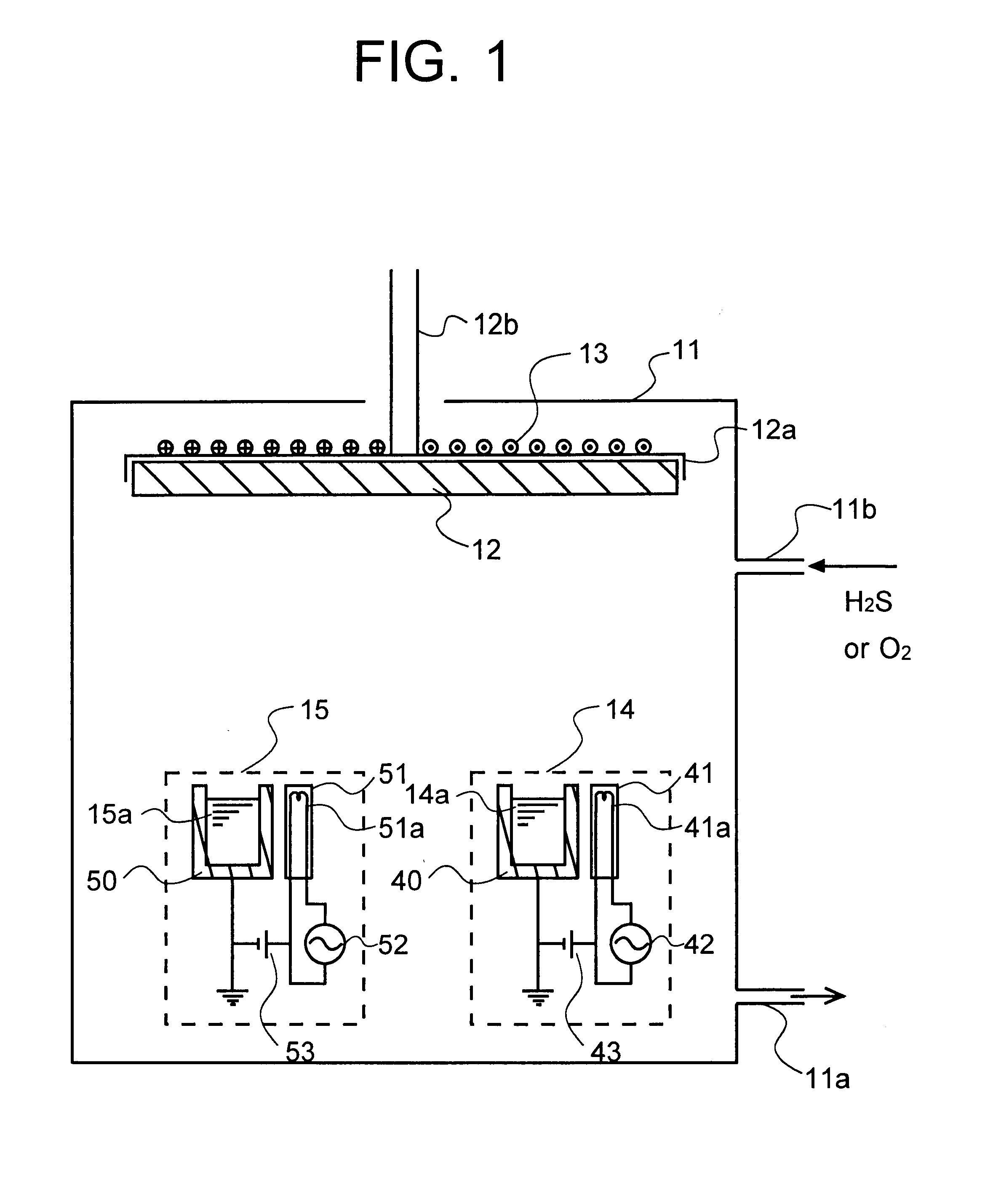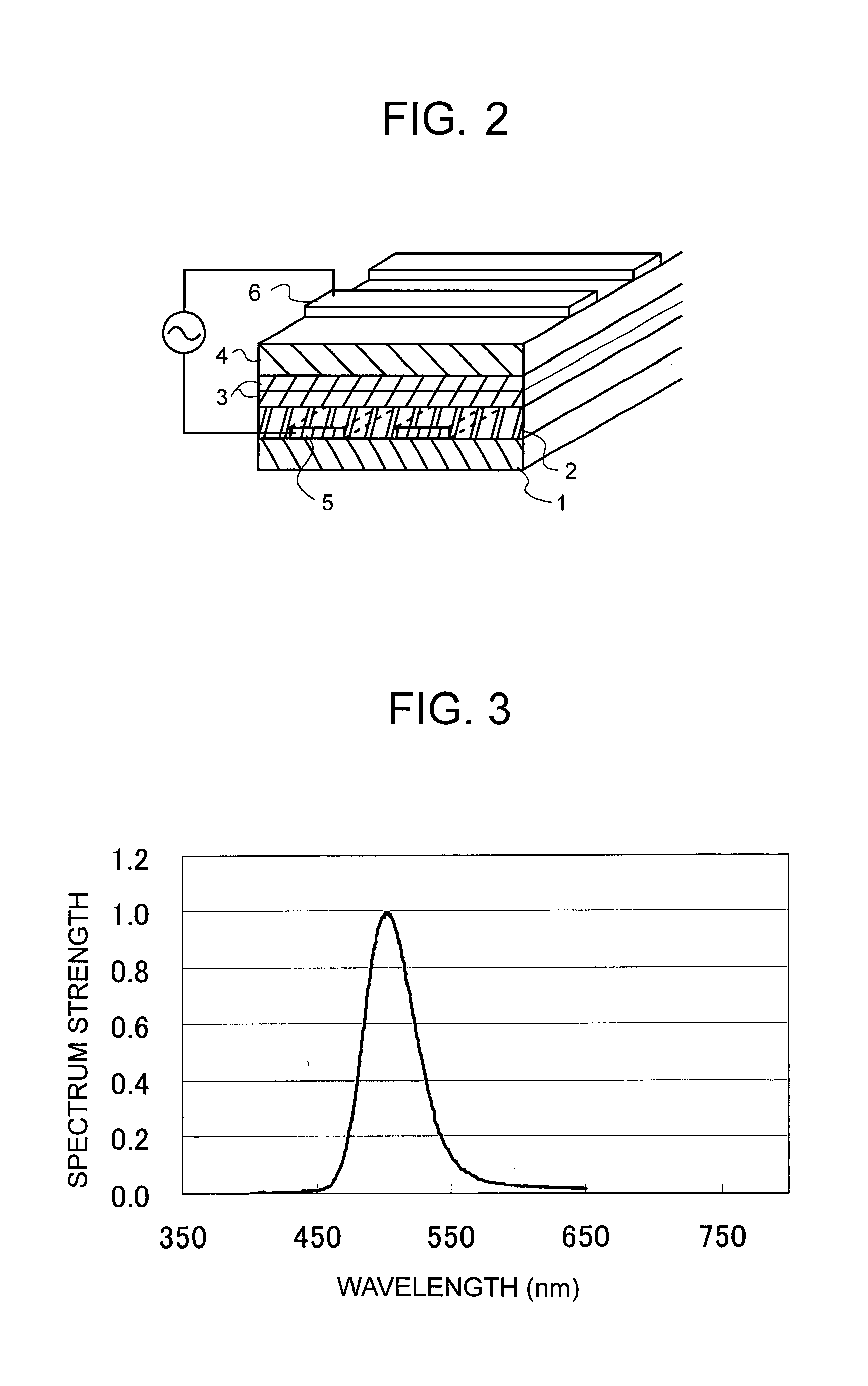Phosphor thin film, preparation method, and EL panel
a technology of phosphor and thin film, applied in the field of phosphor thin film, preparation method, and el panel, can solve the problems of unsuitable color display, green and blue suffer from emission luminance, emission efficiency and color purity, and color el panel has not reached the commercial stag
- Summary
- Abstract
- Description
- Claims
- Application Information
AI Technical Summary
Benefits of technology
Problems solved by technology
Method used
Image
Examples
example 1
FIG. 1 illustrates an exemplary evaporation chamber which can be used in the manufacturing method of the invention. One electron gun and one resistive heating source (or cell) were used instead of two electron guns.
An EB source 15 containing EuS powder having 5 mol % of Ce.sub.2 S.sub.3 added and a cell source 14 containing Al.sub.2 S.sub.3 powder were placed in a vacuum chamber 11. The substances were simultaneously evaporated from the respective sources, and deposited on a rotating substrate heated at 400.degree. C., forming a EuAl.sub.2 S.sub.4 :Ce layer. The rates of evaporation from the respective sources were adjusted so as to give a deposition rate of 1 nm / sec for EuAl.sub.2 S.sub.4 and a molar ratio Eu:Al.sub.2 S.sub.3 of 1:1. During evaporation, H.sub.2 S gas was admitted at 20 SCCM. An insulating thin film was formed thereon, and the structure was annealed at 750.degree. C. for 10 minutes in air, yielding an oxysulfide phosphor thin film, EuAl.sub.2 O.sub.z S.sub.w :Ce.
The...
example 2
In Example 1, ytterbium (Yb) was used instead of Eu as the rare earth element, neodymium (Nd) was used instead of Ce, and Ga.sub.2 S.sub.3 was used instead of Al.sub.2 S.sub.3. Equivalent results were obtained, with emission of red light.
example 3
In Example 1, yttrium (Y) was used instead of Eu as the rare earth element, europium (Eu) was used instead of Ce, and In.sub.2 S.sub.3 was used instead of Al.sub.2 S.sub.3. Equivalent results were obtained, with emission of red light as well.
PUM
| Property | Measurement | Unit |
|---|---|---|
| molar ratio | aaaaa | aaaaa |
| molar ratio | aaaaa | aaaaa |
| molar ratio | aaaaa | aaaaa |
Abstract
Description
Claims
Application Information
 Login to View More
Login to View More - R&D
- Intellectual Property
- Life Sciences
- Materials
- Tech Scout
- Unparalleled Data Quality
- Higher Quality Content
- 60% Fewer Hallucinations
Browse by: Latest US Patents, China's latest patents, Technical Efficacy Thesaurus, Application Domain, Technology Topic, Popular Technical Reports.
© 2025 PatSnap. All rights reserved.Legal|Privacy policy|Modern Slavery Act Transparency Statement|Sitemap|About US| Contact US: help@patsnap.com



